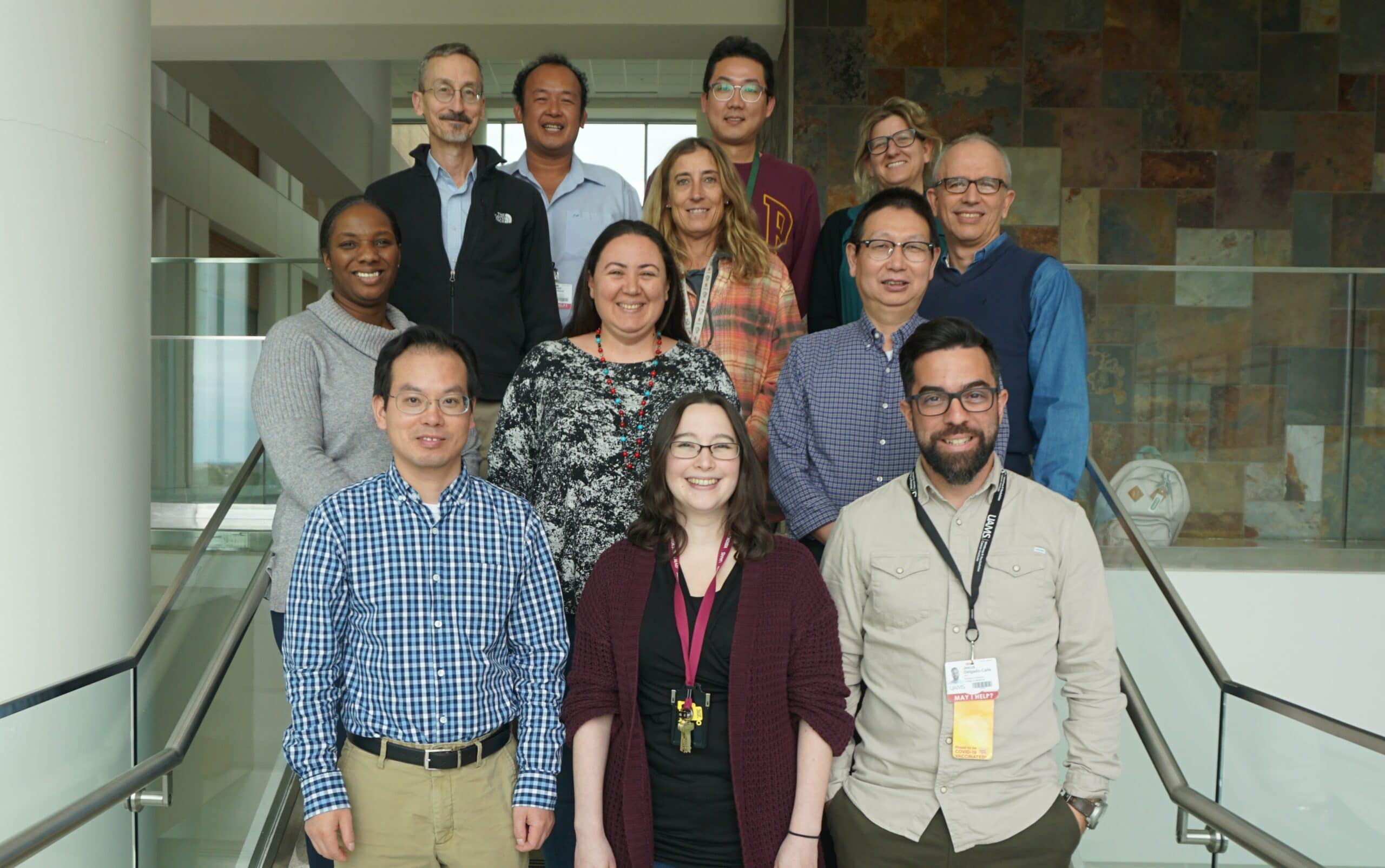UAMS Bone Research Center Secures Second NIH Grant of Over $11 Million
| LITTLE ROCK — A federal grant of more than $11 million will provide five additional years of support to the Center for Musculoskeletal Disease Research led by Charles O’Brien, Ph.D., at the University of Arkansas for Medical Sciences (UAMS).
The $11.5 million Centers of Biomedical Research Excellence (COBRE) Phase 2 grant from the National Institute of General Medical Sciences (NIGMS) branch of the NIH follows a 2018 Phase 1 award of $11.3 million to establish the bone research center.
COBRE funding aims to help establish multidisciplinary, collaborative and synergistic research centers in states with lower rates of federal research funding.
“The long-term goal of the COBRE awards is to build self-sustaining centers of investigators focused on a research theme such as musculoskeletal diseases,” said O’Brien, a professor in the College of Medicine Department of Internal Medicine. “By the time we finish Phase 2, we will have achieved the critical mass of investigators that are independently funded but also collaborating with one another.”
With approval, COBRE grants can be renewed for up to three phases, representing almost $30 million in funding and support for numerous junior investigators. Bone conditions studied at the center include osteoporosis, osteoarthritis, bone-related cancers and joint repair.
Phase 2 funding is not automatic. NIGMS required the UAMS center’s first group of early-career researchers to deliver meaningful results during the first five-year cycle.
They did, O’Brien said, with 51 publications in peer-reviewed journals, including several high-impact studies in journals such as Nature Communications, eLife, Cancer Research, and JCI-Insight. The center’s researchers also submitted 33 applications for external grants, resulting in more than $9.2 million in funding.
The early-career investigators also made 99 presentations at national or international scientific meetings.
“This Phase 2 COBRE award is a testament to the Center for Musculoskeletal Disease Research and its high-quality research. It resoundingly affirms the paramount significance of mentorship in the career development of our junior faculty,” said Shuk-Mei Ho, Ph.D., UAMS vice chancellor for Research and Innovation. “The COBRE program has proven here and across the United States that it is a great catalyst for producing independently funded researchers who will conduct meaningful research for decades to come.”
Three of the center’s project leaders became independently funded, meaning they graduated from COBRE-funded grant support. They are:
- Elena Ambrogini, M.D., Ph.D., associate professor, College of Medicine Department of Internal Medicine-Endocrinology
- Jinhu Xiong, M.D., Ph.D., assistant professor, College of Medicine Department of Orthopaedic Surgery
- Ha-neui Kim, Ph.D., assistant professor, College of Medicine Department of Internal Medicine, Division of Endocrinology and Metabolism
“Their success as project leaders in Phase 1 was essential for the success of the entire program,” O’Brien said.
Equally as important for securing the Phase 2 grant, he said, was having a new slate of highly motivated, talented junior investigators to serve as research project leaders. They are:
- Roy Morello, Ph.D., associate professor, College of Medicine departments of Physiology and Cell Biology, Genetics, and Orthopaedic Surgery
- Melda Onal, Ph.D., assistant professor, College of Medicine Department of Physiology and Cell Biology
- Christopher Wardell, Ph.D., assistant professor, College of Medicine Department of Biomedical Informatics
The center’s researchers receive mentoring from senior UAMS faculty, attend periodic peer workgroup sessions, and hear from distinguished outside speakers who are regularly invited to UAMS. Once the researchers secure an NIH Research Project Grant (R01) or similar level of funding, they are considered “graduated” from the COBRE, and their spot is opened to make room for another junior researcher.
“By the time we finish Phase 2, we will have achieved that critical mass with lots of investigators who are independently funded and collaborating with one another,” O’Brien said.
The COBRE also supports the center’s research with funding for four research cores with highly specialized equipment for bone research. They are:
- Genetic Models Core
- Histology Core
- Imaging Core
- Bioinformatics Core
If all goes well over the next five years, the center will receive Phase 3 funding, which only supports the research cores — no grants for individual researchers — meaning the COBRE award will be about half the amount provided in Phases 1 and 2.
“The goal for Phase 3, if we make it that far, is to help those cores become self-sustaining,” O’Brien said.
COBRE grants are only available for Institutional Development Award (IDeA) states where NIH funding has been historically low. They include 23 states and Puerto Rico. Aside from UAMS there are currently only five institutions with three COBRE grants. These states are: Alaska, Kentucky, Nevada, Rhode Island and West Virginia.
“Researchers at UAMS should be very proud of their collective accomplishments,” Ho said.
UAMS is the state’s only health sciences university, with colleges of Medicine, Nursing, Pharmacy, Health Professions and Public Health; a graduate school; a hospital; a main campus in Little Rock; a Northwest Arkansas regional campus in Fayetteville; a statewide network of regional campuses; and eight institutes: the Winthrop P. Rockefeller Cancer Institute, Jackson T. Stephens Spine & Neurosciences Institute, Harvey & Bernice Jones Eye Institute, Psychiatric Research Institute, Donald W. Reynolds Institute on Aging, Translational Research Institute, Institute for Digital Health & Innovation and the Institute for Community Health Innovation. UAMS includes UAMS Health, a statewide health system that encompasses all of UAMS’ clinical enterprise. UAMS is the only adult Level 1 trauma center in the state. UAMS has 3,275 students, 890 medical residents and fellows, and five dental residents. It is the state’s largest public employer with more than 12,000 employees, including 1,200 physicians who provide care to patients at UAMS, its regional campuses, Arkansas Children’s, the VA Medical Center and Baptist Health. Visit www.uams.edu or uamshealth.com. Find us on Facebook, X (formerly Twitter), YouTube or Instagram.###
